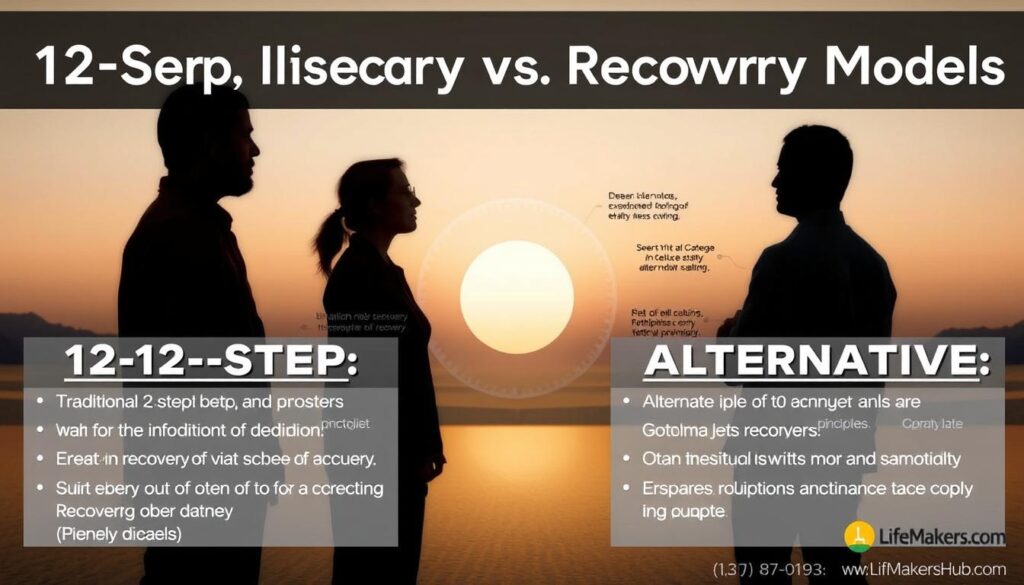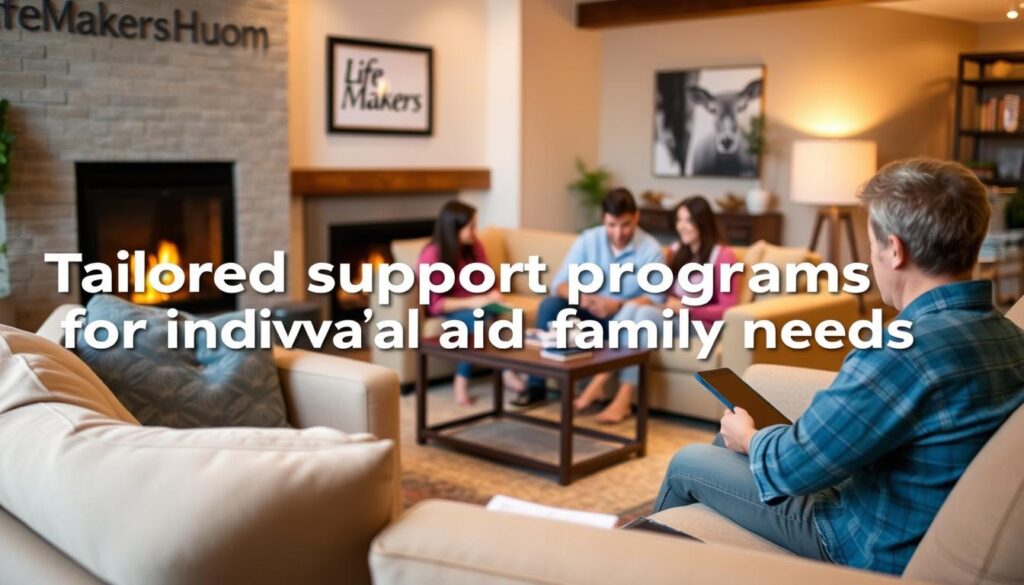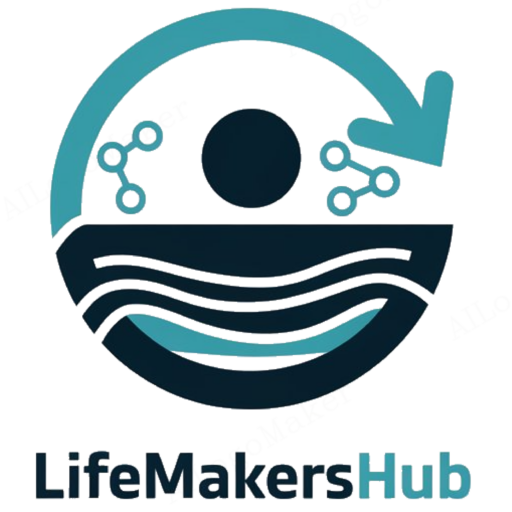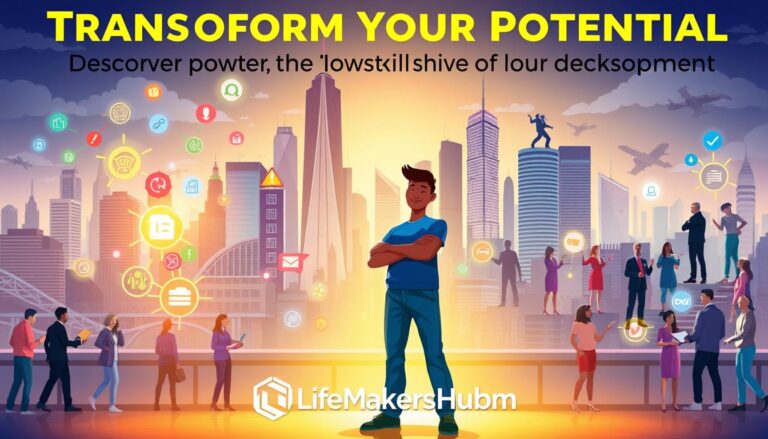Unlock Your Potential with Top Self-Help Programs
Structured group support can be a game-changer for personal growth and recovery. Whether you’re navigating challenges like addiction or seeking a stronger sense of community, mutual support groups offer a safe space to share experiences and learn actionable strategies.
Groups like Alcoholics Anonymous (AA) and Narcotics Anonymous (NA) have helped millions worldwide. Research shows that individuals attending 2-4 AA meetings weekly have a 42.7% one-year abstinence rate, while those attending 5 or more meetings see a 61.1% success rate1. These programs emphasize shared experiences and peer support, creating a foundation for lasting change.
SMART Recovery, another popular option, focuses on self-reliance and harm reduction. Participants often report feeling empowered to take control of their lives2. These groups not only address addiction but also foster mental health and emotional well-being.
By joining a supportive group, you gain access to a network of individuals who understand your journey. This sense of belonging can be transformative, offering both accountability and encouragement. Ready to take the first step? Let’s explore how these programs can help you unlock your potential.
Key Takeaways
- Structured group support fosters personal growth and recovery.
- AA and NA meetings significantly improve abstinence rates1.
- SMART Recovery emphasizes self-reliance and harm reduction2.
- Shared experiences in groups build a sense of community.
- Peer support enhances mental health and emotional well-being.
The Foundation of Self-Help Programs
Understanding the roots of mutual support groups can provide clarity on their effectiveness. These groups are built on principles that emphasize shared experiences, peer support, and collective growth. Whether you’re exploring 12-step methodologies or secular alternatives like SMART Recovery, the foundation remains the same: empowering individuals to take control of their lives.
Core Concepts and Definitions
At the heart of these groups are key concepts like anonymity, peer support, and sponsorship. Anonymity ensures a safe space for members to share openly, while peer support fosters a sense of belonging. Sponsorship, often a cornerstone of 12-step programs, pairs newcomers with experienced members for guidance.
SMART Recovery, on the other hand, focuses on self-reliance and cognitive behavioral strategies. As one participant noted,
“The program gave me tools to manage my challenges without relying on a higher power.”
This approach appeals to those seeking a secular alternative.
Historical Perspective in Recovery Movements
The origins of mutual support groups trace back to the 1930s with the founding of Alcoholics Anonymous (AA). Today, AA boasts over 2 million members worldwide, while Narcotics Anonymous (NA) has become the largest 12-step fellowship for drug addiction1. These groups have evolved to address diverse needs, including mental health and emotional well-being.
Research shows that meeting attendance significantly impacts recovery outcomes. For example, those attending 5 or more AA meetings weekly achieve a 61.1% one-year abstinence rate1. This highlights the importance of consistent engagement in these programs.
| Program | Focus | Key Principle |
|---|---|---|
| AA | Alcohol Addiction | 12 Steps, Higher Power |
| NA | Drug Addiction | Peer Support, Anonymity |
| SMART Recovery | Self-Reliance | Cognitive Behavioral Tools |
These programs have faced challenges, such as perceptions of exclusivity or triggering discussions. However, their success lies in their adaptability and commitment to fostering a supportive community. As one member shared,
“The group became my second family, helping me through my darkest times.”
Exploring the Benefits and Drawbacks
Joining a supportive group can open doors to personal transformation and resilience. These groups provide a safe space to share experiences, learn coping strategies, and build lasting connections. However, like any approach, they come with their own set of challenges. Let’s dive into the advantages and potential drawbacks to help you make an informed decision.
Advantages: Fellowship, Support, and Coping Strategies
One of the most significant benefits of mutual support groups is the sense of fellowship. Being surrounded by individuals who understand your journey can be incredibly empowering. Research shows that those attending 5 or more meetings weekly achieve a 61.1% one-year abstinence rate1. This highlights the power of consistent engagement.
Participants often report feeling supported to remain abstinent and learn practical coping strategies2. As one member shared,
“The group gave me tools to manage my challenges and stay on track.”
This sense of accountability and encouragement can be transformative.
Challenges: Exclusivity and Triggering Discussions
While these groups offer many benefits, they are not without challenges. Some individuals find the dynamics of certain groups to be exclusive or cliquey. This can make it harder for newcomers to feel welcomed.
Additionally, discussions in these settings can sometimes act as triggers for substance use2. One participant noted,
“Hearing others’ stories made me crave substances instead of avoiding them.”
It’s essential to find a group that aligns with your comfort level and needs.
Balancing Abstinence and Moderation Approaches
Another challenge lies in the differing approaches to recovery. Traditional 12-step programs often emphasize abstinence, while alternatives like SMART Recovery focus on harm reduction. This can create a divide for those seeking a middle ground.
For example, some participants appreciate the flexibility of reducing consumption rather than quitting entirely2. Balancing these approaches requires careful consideration of your personal goals and values.
| Aspect | Advantages | Challenges |
|---|---|---|
| Fellowship | Sense of belonging, shared experiences | Potential for exclusivity |
| Support | Accountability, encouragement | Triggering discussions |
| Approach | Abstinence or harm reduction | Balancing differing philosophies |
By understanding both the benefits and challenges, you can make an informed choice about joining a mutual support group. Whether you’re seeking fellowship or practical tools, these groups offer a unique opportunity for growth and recovery.
Navigating 12-Step and Alternative Recovery Models

Choosing the right recovery model can significantly impact your journey toward healing and growth. Whether you resonate with traditional 12-step methodologies or prefer modern, secular approaches, understanding the differences can help you make an informed decision. Let’s explore the unique features of these models and how they can support your recovery.
Insights into 12-Step Programs
12-step programs like Alcoholics Anonymous (AA) and Narcotics Anonymous (NA) have been cornerstones of recovery for decades. These groups emphasize spirituality, often interpreting a higher power as a guiding force. Meetings typically follow a structured format, including speaker sessions, discussions, and literature reviews1.
One participant shared,
“The 12 steps gave me a framework to rebuild my life, one day at a time.”
Research shows that attending 5 or more meetings weekly can lead to a 61.1% one-year abstinence rate1. This highlights the importance of consistent engagement in these programs.
The Rise of SMART Recovery and Secular Options
For those seeking a non-spiritual approach, SMART Recovery offers a scientifically oriented alternative. This model focuses on cognitive-behavioral strategies and self-reliance, allowing participants to choose their level of risk reduction2.
Meetings are often unstructured and non-judgmental, fostering an open environment for sharing. As one member noted,
“SMART gave me tools to manage my challenges without relying on a higher power.”
This flexibility appeals to individuals who prefer a more personalized approach to recovery.
| Model | Focus | Key Features |
|---|---|---|
| 12-Step Programs | Spirituality, Abstinence | Higher Power, Sponsorship |
| SMART Recovery | Self-Reliance, Harm Reduction | Cognitive Behavioral Tools |
Both models offer unique benefits, and exploring multiple options can help you find the best fit. Whether you’re drawn to the fellowship of 12-step groups or the flexibility of SMART Recovery, the key is to stay engaged and committed to your journey.
Maximizing Impact with Self-Help Programs
Active participation in group settings can significantly amplify personal growth and recovery outcomes. Whether you’re new to mutual support or a long-time member, engaging fully in these activities can transform your journey. Let’s explore how you can make the most of your experience.
Optimizing Group Engagement and Personal Growth
Consistent attendance is one of the most effective ways to maximize benefits. Research shows that individuals attending 5 or more meetings weekly achieve a 61.1% one-year abstinence rate1. This highlights the power of regular involvement in building self-efficacy and lasting change.
Building strong peer relationships is equally important. As one participant shared,
“The group became my second family, helping me through my darkest times.”
These connections foster accountability and provide a safe space for sharing experiences.
Here are actionable tips to enhance your participation:
- Set clear goals: Define what you want to achieve, whether it’s sobriety, emotional well-being, or personal growth.
- Engage actively: Share your story, ask questions, and listen to others. This builds trust and strengthens group cohesion.
- Integrate activities into daily routines: Apply strategies learned in meetings to real-life situations for lasting impact.
Experiential learning plays a crucial role in recovery. By sharing personal experiences, members gain insights and practical tools to navigate challenges. This approach not only supports individual growth but also strengthens the group dynamic.
Finally, consider the role of a sponsor or mentor. Research indicates that having a sponsor is one of the strongest predictors of long-term abstinence1. Their guidance can provide structure and encouragement, helping you stay on track.
By embracing these strategies, you can unlock the full potential of group support and create a foundation for lasting change.
Tailoring Programs for Individual and Family Needs

Customizing support systems to fit unique needs can transform recovery journeys. Every person brings their own challenges, goals, and cultural background, making adaptability essential. By tailoring programs, groups can better serve diverse participants, ensuring everyone feels included and supported.
Customizing Approaches for Diverse Participants
Programs like Alcoholics Anonymous (AA) and Narcotics Anonymous (NA) have evolved to address specific demographics. For example, larger fellowships offer meetings for women, men, and LGBTQ+ communities1. This inclusivity fosters a sense of belonging and ensures participants feel understood.
SMART Recovery, known for its flexibility, allows individuals to choose their level of risk reduction. As one member shared,
“The program gave me the freedom to set my own pace, which made all the difference.”
This approach appeals to those who prefer a more personalized recovery journey2.
Research shows that women may be more responsive to group support, while untreated depression can hinder engagement1. By addressing these factors, programs can better meet individual needs.
Family-Focused Support
Families play a crucial role in recovery, and many programs now include family-specific sessions. These groups provide education, coping strategies, and emotional support for loved ones. As one participant noted,
“Learning how to support my partner without enabling their addiction changed our relationship for the better.”
Tailored outreach for minority groups, such as Aboriginal women, has also shown success. These sessions address unique cultural and social challenges, creating a safe space for healing2.
By adapting traditional models, programs can enhance their effectiveness and reach. Whether it’s through demographic-specific meetings or flexible approaches, customization ensures every individual and family has the opportunity to thrive.
Strategies for Engaging with Recovery-Oriented Groups
Engaging effectively with recovery-oriented groups can significantly enhance your journey toward lasting change. Whether you’re new to these groups or a long-time member, practical strategies can help you maximize the benefits of participation. Let’s explore actionable tips for attending meetings, finding sponsors, and leveraging peer support for long-term success.
Actionable Tips for Attending Meetings and Finding Sponsors
Consistent attendance is one of the most effective ways to build momentum in your recovery. Research shows that individuals attending 5 or more meetings weekly achieve a 61.1% one-year abstinence rate1. This highlights the importance of regular engagement in fostering self-efficacy and resilience.
Finding a sponsor can provide valuable guidance and accountability. In 12-step programs, sponsors are experienced members who help newcomers navigate the process. As one participant shared,
“My sponsor became my anchor, offering support and wisdom when I needed it most.”
Here are some tips for finding and working with a sponsor:
- Attend multiple meetings: This increases your chances of meeting potential sponsors who align with your goals.
- Ask questions: Inquire about their experience and approach to sponsorship to ensure a good fit.
- Communicate openly: Share your challenges and progress to build a strong, trusting relationship.
Utilizing Peer Support for Long-Term Success
Peer support is a cornerstone of recovery-oriented groups. Surrounding yourself with individuals who understand your journey can be incredibly empowering. Studies suggest that self-selected participants in these groups show greater benefits compared to those who are coerced into participation1.
Engaging actively in meetings fosters a sense of belonging and accountability. As one member noted,
“The group became my second family, helping me through my darkest times.”
Here’s how to make the most of peer interactions:
- Share your story: Open up about your experiences to build trust and encourage others.
- Listen actively: Pay attention to others’ stories to gain insights and practical tools.
- Participate in group activities: These activities strengthen connections and provide opportunities for growth.
| Strategy | Benefit |
|---|---|
| Consistent Attendance | Builds momentum and self-efficacy1 |
| Finding a Sponsor | Provides guidance and accountability |
| Active Peer Engagement | Fosters a sense of belonging and support |
By implementing these strategies, you can unlock the full potential of recovery-oriented groups. Whether you’re seeking accountability, guidance, or a sense of community, these groups offer a unique opportunity for growth and sustained change.
Conclusion
Taking the first step toward recovery can feel overwhelming, but the right support system makes all the difference. Throughout this article, we’ve explored how group settings foster personal growth, accountability, and a sense of belonging. Whether you choose traditional 12-step models or modern alternatives, the key is finding a program that aligns with your individual needs.
Research shows that consistent attendance, such as 5 or more meetings weekly, significantly improves outcomes3. This highlights the power of engagement in creating lasting change. By actively participating, you gain tools to navigate challenges and build meaningful connections with others who share your experience.
Your journey is unique, and the right group can provide the support you need to thrive. Take the first step today—explore available options and embrace the opportunity to grow. Remember, you’re not alone, and every step forward is a victory.







